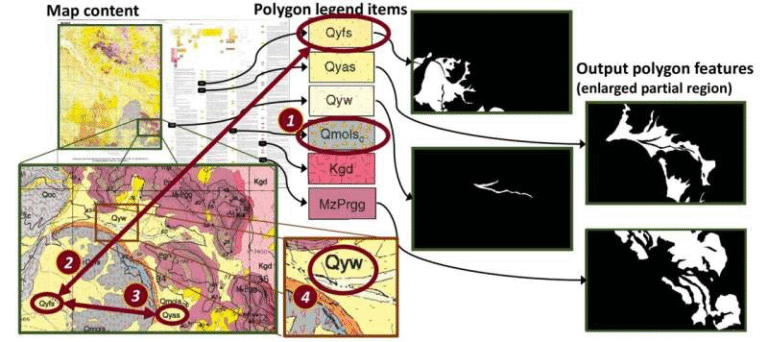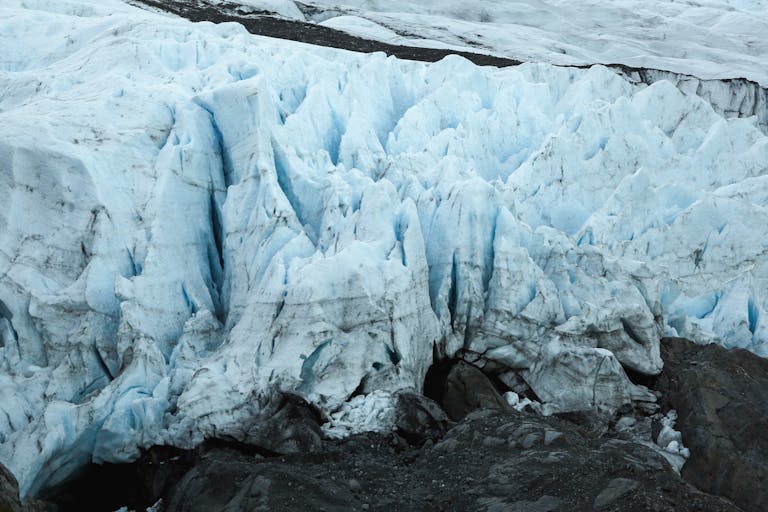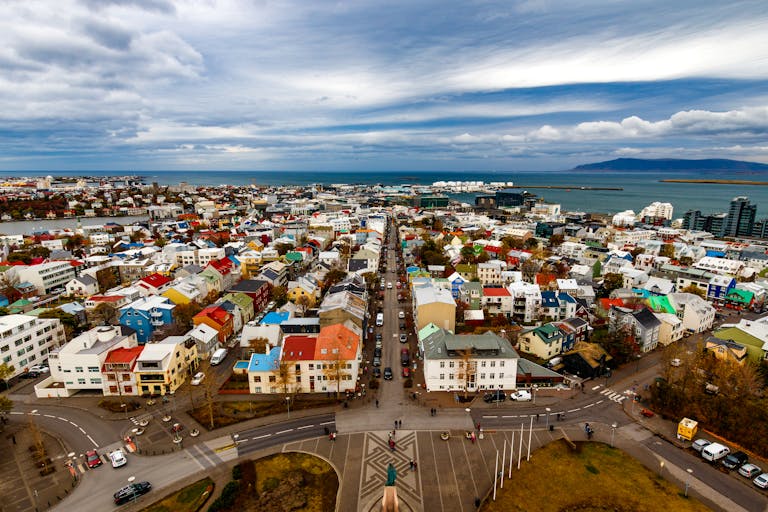Hydrothermal Plumes: The Ocean’s Hidden Highways for Iron and Life

When we think of sources of life-supporting nutrients in the ocean, most people imagine rivers, dust from deserts, or melting ice sheets. But deep down on the ocean floor, something remarkable is happening — hydrothermal vents are releasing mineral-rich fluids into the sea, creating massive, invisible clouds known as hydrothermal plumes. These plumes, as a new scientific review reveals, are acting as long-distance transport systems for iron, a critical nutrient for ocean ecosystems.
A new review study called “Iron’s Irony”, published in Communications Earth & Environment, has been led by researchers from the MARUM—Center for Marine Environmental Sciences at the University of Bremen. This work dives deep into the complex journey of iron — from its explosive release at hydrothermal vents to its surprising persistence across entire ocean basins. The study combines decades of research with new data and models, helping scientists better understand how the seafloor connects to global element cycles and, ultimately, to life at the surface.
Understanding Hydrothermal Vents and Plumes
Hydrothermal vents are like natural chimneys that form along the mid-ocean ridges, where Earth’s tectonic plates pull apart. Seawater seeps into cracks in the crust, gets heated by magma, and then shoots back out, carrying dissolved metals and minerals, including iron, manganese, sulfur, and other elements. The expelled water can reach temperatures of up to 400°C, instantly mixing with the icy deep-sea water that hovers near 2°C.
This mixing creates hydrothermal plumes — massive clouds of mineral-rich fluids that drift away from the vent site. The plumes spread both horizontally and vertically, distributing chemical elements over large areas of the ocean. What’s fascinating is that most of this process is invisible to us. These clouds don’t have a clear boundary, and their contents can travel for thousands of kilometers, influencing ocean chemistry far from where they began.
Why Iron Matters So Much
Iron is a micronutrient — organisms need it in tiny amounts, but it’s absolutely essential. In the ocean, it plays a crucial role in phytoplankton growth, which in turn drives the marine food web and the global carbon cycle. Phytoplankton act as carbon sinks, drawing carbon dioxide from the atmosphere during photosynthesis.
However, in many parts of the ocean — particularly in what scientists call High Nutrient, Low Chlorophyll (HNLC) regions — iron is the limiting nutrient. That means even if there are enough nitrates, phosphates, and sunlight, phytoplankton can’t thrive without iron. Because of this, understanding where oceanic iron comes from and how it moves is a big deal.
We already know that dust blown from continents, river runoff, and melting ice contribute iron. But hydrothermal vents have recently gained attention as a major, previously underestimated source.
The Study: “Iron’s Irony”
The new review, led by Dr. Solveig I. Bühring, along with Alexander Diehl, Charlotte Kleint, and Andrea Koschinsky, explores how iron behaves after it leaves hydrothermal systems. The research team included 12 scientists from several leading German marine institutions — MARUM, GEOMAR Helmholtz Centre for Ocean Research Kiel, the Alfred Wegener Institute (AWI), and the Institute for Chemistry and Biology of the Marine Environment (ICBM) in Oldenburg.
Their main goal was to synthesize existing knowledge and reinterpret it using fresh data and modeling approaches. They pulled information from the MARHYS hydrothermal vent database, which compiles fluid chemistry from vent systems around the world. Using this data, the researchers examined how iron concentrations relate to environmental factors like temperature, pH, chlorinity, and sulfur content in vent fluids.
They then modeled iron mineral solubility — essentially predicting how different environmental parameters influence whether iron stays dissolved or precipitates (turns into solid particles). This was key to understanding what proportion of iron can actually travel long distances.
What Happens to Iron After It’s Released
When hydrothermal fluids spew into the ocean, much of the iron reacts almost instantly with oxygen and sulfur, forming iron oxides and sulfide minerals that quickly settle to the seafloor. This process was long thought to remove nearly all hydrothermal iron near the vent sites.
But the new review challenges that old assumption. The team found that a small but significant fraction of the iron remains dissolved or bound to tiny organic molecules, or it exists as nanoparticles that don’t sink right away. These microscopic forms of iron are surprisingly stable and can remain suspended in the water column for long periods, allowing them to travel across entire ocean basins.
Microbes also play a crucial role here. Some microorganisms in the plume environment can interact with iron, altering its chemical state or binding it to organic compounds that prevent it from precipitating. This biogeochemical interplay means that biology, chemistry, and physics are all connected in keeping iron moving through the ocean.
Plumes as Oceanic Highways
The researchers describe hydrothermal plumes as “invisible transport pathways” that move bioavailable iron far from its source. The idea is that these plumes act as long-distance delivery systems, linking seafloor processes to surface ocean ecosystems.
These plumes can disperse iron thousands of kilometers from the vent site. Even though the dissolved fraction might be small, the total scale of the process — multiplied across the thousands of hydrothermal vents worldwide — means that hydrothermal systems could contribute a substantial portion of the global oceanic iron budget.
This movement of iron influences ocean productivity, carbon storage, and even climate regulation, since phytoplankton growth directly affects how much CO₂ the ocean absorbs from the atmosphere.
Modeling the Invisible
To make sense of how far iron can go, the authors modeled the solubility of iron minerals under various environmental conditions. They simulated how changes in temperature, pressure, and pH influence whether iron remains soluble or precipitates out.
The results showed that conditions within plumes — which are characterized by gradual cooling, mixing, and changes in redox state — strongly determine how iron behaves. The more stable the plume environment and the slower it mixes with oxygenated seawater, the farther the iron can travel before settling out.
Organic molecules and microbial interactions add another layer of complexity, essentially giving iron a “chemical disguise” that helps it remain soluble. This is a big reason why iron doesn’t just vanish near the vent but instead joins the global circulation system.
Why This Matters Globally
The findings from this review are not just academic. They have major implications for how we model global biogeochemical cycles and climate processes.
If hydrothermal plumes are indeed transporting iron across vast distances, then these deep-sea systems might have a greater role in fueling ocean life than previously thought. This could also mean that deep-sea mining or climate changes affecting the ocean floor could disrupt these hidden nutrient highways.
As the study notes, ocean conditions such as temperature, acidity, and oxygen levels are changing rapidly. These changes could alter how much iron stays dissolved and how efficiently it travels. In other words, what happens deep beneath the waves could shape the future productivity of the oceans — and, indirectly, the global carbon balance.
The Bigger Picture: Iron and the Earth System
Iron cycling is a great example of how Earth’s systems are interconnected. The seafloor might seem remote, but it’s tied to the chemistry of the atmosphere and the health of marine ecosystems. The Cluster of Excellence “The Ocean Floor—Earth’s Uncharted Interface” at MARUM focuses exactly on this — understanding how physical, chemical, and biological processes at the seafloor interact to sustain planetary balance.
Dr. Charlotte Kleint from MARUM highlights that studies like this show how intricately linked these systems are. The seafloor isn’t just a passive landscape — it’s an active player in regulating the Earth’s environment.
Microbes and Molecules: The Invisible Helpers
One of the most fascinating aspects of hydrothermal plumes is the role of microorganisms. Microbes living near and within these plumes are capable of oxidizing or reducing iron, meaning they can change its chemical form. Some of them produce organic ligands — small molecules that bind to metals. These ligands can stabilize dissolved iron, keeping it in solution longer and allowing it to move further.
This microbial influence creates a feedback loop. Microbes help keep iron mobile, and that same iron, when it eventually reaches other parts of the ocean, supports more microbial and phytoplankton growth.
Scientists are now trying to understand the exact chemical forms of iron in plumes — how much is truly dissolved, how much is nanoparticulate, and how much is bound to organic matter. This distinction is important for predicting how the iron will behave in different parts of the ocean.
What Comes Next
The review ends by pointing out what still needs to be explored. Future research will aim to:
- Quantify how much hydrothermal iron actually makes it to the surface ocean.
- Identify the precise molecular forms of iron that travel long distances.
- Understand the role of ocean circulation and mixing in distributing hydrothermal iron.
- Examine how changing climate conditions (like ocean acidification and deoxygenation) will affect iron solubility and transport.
- Better link hydrothermal iron transport to phytoplankton productivity and carbon storage.
This kind of interdisciplinary work — blending geochemistry, microbiology, and ocean modeling — is essential to map out these invisible nutrient highways of our planet.
A Reminder of How Much We Don’t See
Hydrothermal vents were only discovered in 1977, and we’re still uncovering how influential they are. The discovery that they may be supplying iron across ocean basins is another reminder that the deep sea is not an isolated world — it’s part of a continuous system that sustains life across the planet.
As the authors of the study emphasize, hydrothermal plumes are powerful connectors. They quietly move nutrients through the depths, feeding ecosystems we can’t see but depend on in more ways than we realize.
Research Reference:
Solveig I. Bühring et al. (2025). Iron’s Irony: Speciation, Complexation & Microbial Processing of Fe in Hydrothermal Plumes. Communications Earth & Environment. https://doi.org/10.1038/s43247-025-02839-4





